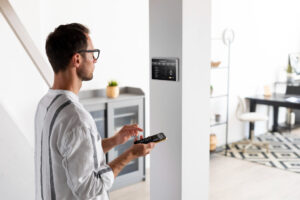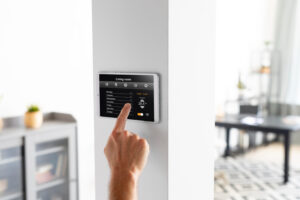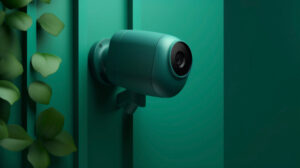Business Security Camera Placement: Expert Guide to Optimal Surveillance
Security cameras are essential components of any comprehensive business security strategy, but their effectiveness depends heavily on proper placement. Strategic camera positioning ensures maximum coverage, deters potential threats, and provides valuable evidence when security incidents occur. This expert guide explores the principles of optimal security camera placement for businesses of all sizes.
Understanding Your Security Camera Coverage Goals
Before determining where to place security cameras, it’s important to establish clear objectives for your surveillance system. Most businesses need to address several key goals:
1. Deterrence
Visible security cameras serve as powerful deterrents to potential criminals. Cameras placed where they can be easily seen by visitors and passersby communicate that your business takes security seriously and that illicit activities will be recorded.
2. Monitoring Critical Areas
Certain areas of your business require close monitoring due to their importance or vulnerability. These typically include areas containing valuable inventory, sensitive information, or critical infrastructure.
3. Documentation of Incidents
When security events occur, clear video evidence is invaluable for investigations, insurance claims, and potential legal proceedings. Cameras should be positioned to capture useful identifying details and action sequences.
4. Operational Oversight
Beyond security concerns, camera systems can provide valuable insights into business operations, customer flow, and employee activities, helping to optimize processes and enhance safety.
Essential Camera Placement Locations for Businesses
Entry and Exit Points
All access points to your facility should be covered by security cameras, including:
– Main entrances and exits
– Emergency exits and fire doors
– Loading docks and service entrances
– Parking garage entrances
– Roof access points
For optimal coverage, position cameras to capture clear facial images of individuals entering and exiting. Consider installing cameras at both eye level for identification purposes and at higher angles for broader coverage.
Point of Sale Areas
Retail businesses should prioritize camera coverage at checkout areas to:
– Monitor cash handling procedures
– Deter employee theft
– Document customer transactions
– Capture evidence in case of disputes or robberies
Position cameras to show both the register display and the customer-employee interaction area. Overhead cameras provide the best view of transactions, while face-level cameras capture clear images of customers.
Inventory and Storage Areas
Areas containing valuable inventory or equipment require comprehensive surveillance:
– Warehouse floors and shelving areas
– Stock rooms and supply closets
– High-value product displays
– IT equipment storage
Use wide-angle cameras to monitor large storage areas, supplemented by focused cameras on particularly valuable inventory sections. Ensure lighting is adequate for clear video, especially in warehouse environments.
Reception and Lobby Areas
Front office spaces benefit from surveillance to:
– Monitor visitor arrivals and departures
– Provide visual records of who enters your facility
– Enhance receptionist security
– Document activity in waiting areas
Position cameras to capture clear views of entry doors and the reception desk. Consider additional cameras covering waiting areas and internal doors leading from public to private areas.
Exterior Perimeter
The outside of your facility requires strategic camera placement:
– Building perimeter covering all sides
– Parking lots and employee parking areas
– Alleyways and loading zones
– Property boundaries and fence lines
Exterior cameras should be weather-resistant with infrared or low-light capabilities for nighttime monitoring. Position cameras high enough to prevent tampering while ensuring they capture useful details.
Server Rooms and Sensitive Areas
Areas containing sensitive information or critical infrastructure need specialized coverage:
– Server rooms and data centers
– Electrical and communications equipment rooms
– Records storage areas
– Executive offices containing sensitive information
For these locations, camera placement should focus on documenting who accesses the area and when. Cover both the room interior and the entry point to capture anyone entering or exiting.
Technical Considerations for Optimal Camera Placement
Camera Fields of View
Understanding camera viewing angles is crucial for effective placement:
– Wide-angle cameras (90-180 degrees) provide broader coverage but less detail
– Standard lenses (30-60 degrees) offer balanced coverage and detail
– Telephoto lenses (under 30 degrees) capture specific areas with high detail
Match the camera’s field of view to the area being monitored. Use wide-angle cameras for large open spaces and narrower fields of view for focused monitoring of specific points of interest.
Lighting Conditions
Camera effectiveness depends heavily on lighting considerations:
– Avoid pointing cameras directly at bright light sources
– Be aware of changing lighting conditions throughout the day
– Consider infrared or low-light cameras for dimly lit areas
– Test camera placement under various lighting conditions
Backlighting can render faces unrecognizable, so position cameras to avoid having bright windows or lights directly behind subjects whenever possible.
Mounting Height and Angle
The height and angle of camera mounting affects both coverage and image quality:
– Higher mounting (8-10 feet or above) reduces tampering risk
– Lower mounting (5-7 feet) provides better facial detail
– Angle cameras slightly downward to capture faces
– Avoid extreme downward angles that obscure facial features
For identification purposes, cameras should be positioned to capture subjects’ faces clearly. This often requires a balance between mounting height and camera angle.
Coverage Overlap
Effective security camera systems use overlapping coverage to eliminate blind spots:
– Ensure adjacent cameras have overlapping fields of view
– Use multiple cameras with different angles in critical areas
– Create redundancy for essential monitoring points
– Map out coverage areas during the planning phase
Overlapping coverage ensures that if one camera fails or is tampered with, the area remains under surveillance from another angle.
Common Camera Placement Mistakes to Avoid
– Inadequate coverage of blind spots – Comprehensive planning is essential to identify and address potential gaps
– Poor lighting consideration – Cameras must be matched to the lighting conditions where they’ll operate
– Obstructed views – Ensure camera views won’t be blocked by fixtures, equipment, or growing vegetation
– Excessive compression of video quality – Balance storage needs with the requirement for identifiable details
– Neglecting camera maintenance – Regular cleaning and testing ensures optimal performance
– Focusing only on interior spaces – Comprehensive security requires both internal and external coverage
The Value of Professional Security Camera Installation
While basic camera placement principles can be understood by business owners, professional security system installers bring valuable expertise to the process:
– Comprehensive site assessment to identify vulnerable areas
– Knowledge of the latest camera technologies and capabilities
– Experience with optimal mounting techniques and positioning
– Understanding of networking and storage requirements
– Ability to integrate cameras with other security systems
Professional installation ensures your surveillance system provides maximum coverage and effectiveness while avoiding common pitfalls that can compromise security.
Conclusion: Creating a Comprehensive Camera Security Plan
Strategic security camera placement is a critical component of effective business protection. By understanding your specific security goals, identifying key areas requiring surveillance, and applying technical best practices, you can create a camera system that deters threats, documents incidents, and provides peace of mind.
At SoldiscInc, our security experts specialize in designing and installing customized camera systems for businesses of all sizes. We consider your unique facility layout, security concerns, and operational requirements to create a surveillance solution that provides optimal protection.
Ready to enhance your business security with strategically placed surveillance cameras? Contact SoldiscInc today at +1(204) – 891 – 5326 or request a professional security assessment to learn how we can help protect your business.**




